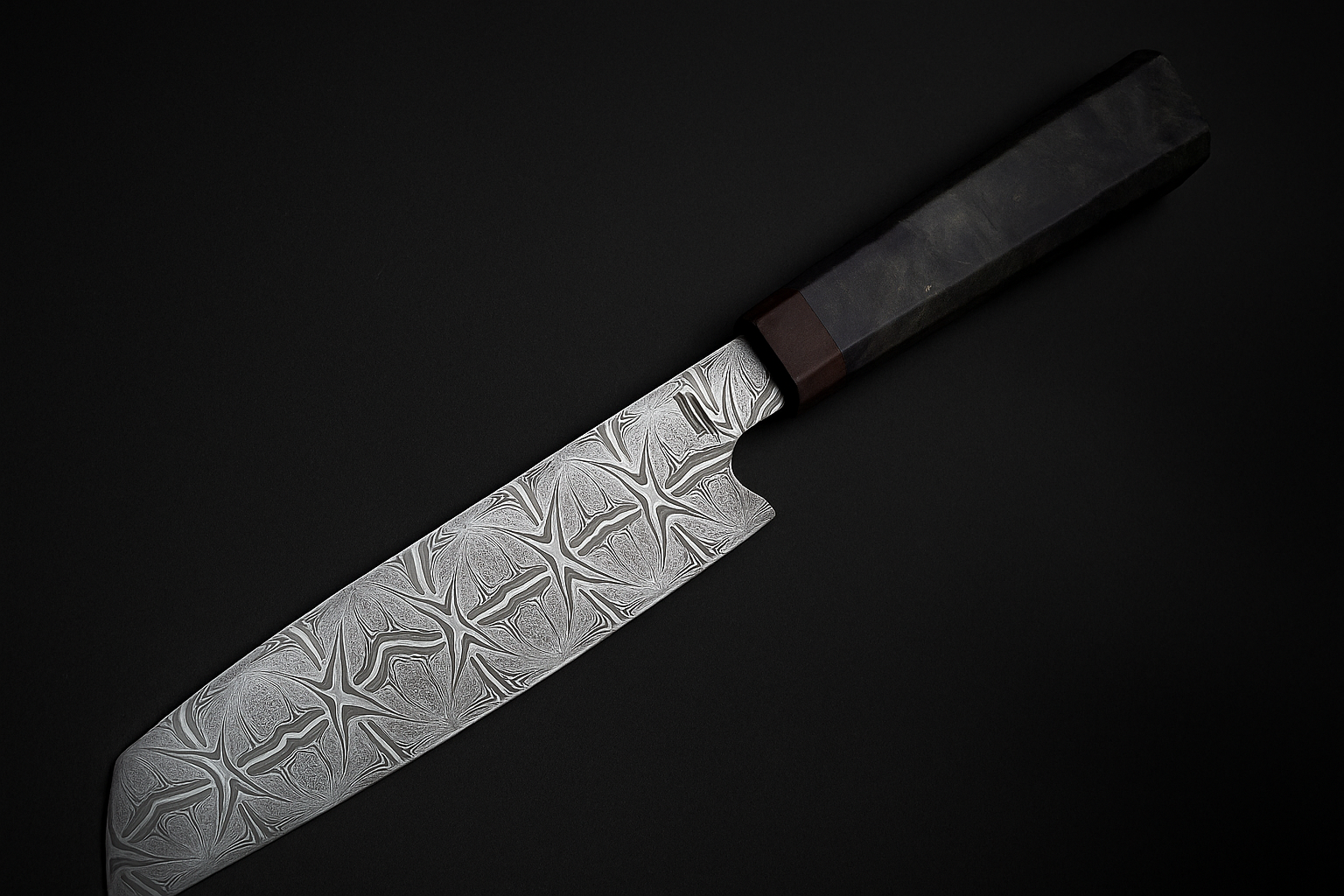What is the best chef’s knife?
People ask me this quite often. And usually, they expect a clear answer – a specific knife, a model, a length or a type of steel. But it’s not that simple. And to be honest, I don’t really know either – I’m not a chef, I’m the one who makes the knives. Technically, sure, I know how a blade cuts, but…
I think the best chef’s knife mostly depends on the person holding it.
Some step into the kitchen quietly and routinely – cut the bread, boil an egg, make a sandwich. Others turn it into a Saturday ritual: the best ingredients, long preparation, slicing like an art. Some cut every day, some only when the mood strikes. In every case, the knife has to suit that person’s hand and habits.
Steel that holds – and speaks
For me, steel is more than just metal. It’s work, a story, something with a soul. I use a lot of Damascus steel because I like it when a knife isn’t just a tool, but an object with character. A steel that keeps its edge but also tells the story of how it was made. Those patterns aren’t just decoration – they’re traces of when fire and steel met.
Stainless is practical, carbon steel holds an edge better but needs care. Both have their place. Damascus adds another layer – it’s unique. No two blades are ever exactly alike.
Blade shape – Japanese, European, or in between
Some want a thin and light knife – something that slides through tomato skin effortlessly. That’s more of a Japanese style, like gyuto or santoku. Others ask for something stronger, heavier – a blade you can press down with if needed. That leans more toward the European direction, with thicker, tougher blades.
I don’t say one is better than the other. I prefer to ask: what do you cut? How do you like to cut? If you know the answer, then you’ll know what knife suits you.
Handle – the part that must fit your hand
I use stabilized wood. That means it keeps the natural beauty and grain, but it’s also durable – it won’t absorb moisture, shrink, swell, crack, or soak up kitchen life. It’s wood, but upgraded.
It’s a material that stands up to time and water. And most importantly – it has to feel right in your hand.
A good handle isn’t just pretty. It doesn’t tire you out. It simply disappears into your hand. You pick up the knife, and it feels like it’s always been there.
The best knife? It’s the one you always come back to
In the end, I always say: don’t ask what is “the best.” Ask: what suits me best?
It’s the knife you pick up in the morning without thinking. The one you never lend out because it’s like an old tool that’s already used to you.
It’s the one you use for years, and when it’s finally lost, you feel like something went with it. Not because it was expensive or fancy – but because it had become yours.
The best chef’s knife isn’t the one everyone recommends.
It’s the one you long to pick up. The one you always return to. The one that makes you not just someone who cooks – but someone who feels that every cut matters.
If you want me to forge you a knife like that – one that’s truly yours – let me know.
I’ve got time. I don’t make many at once. But when I do, I make them to last.
